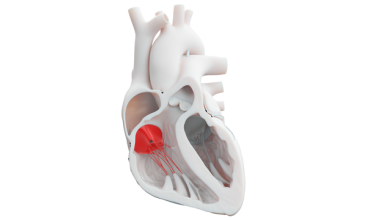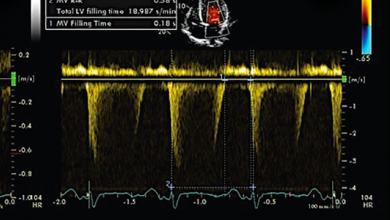Search results
Author(s):
Sahoor Khan
,
William Shi
,
Tsuyoshi Kaneko
,
et al
Added:
1 year ago
Author(s):
Muhammad Asim Shabbir
,
Pradeep Yadav
,
Nidhish Tiwari
,
et al
Added:
8 months ago
Author(s):
Jaime A Hernandez-Montfort
,
Diana Miranda
,
Varinder Kaur Randhawa
,
et al
Added:
2 years ago
Author(s):
Rani Upadhyay
,
Hussayn Alrayes
,
Scott Arno
,
et al
Added:
2 years ago
Author(s):
Shahana Uddin
,
Rathai Anandanadesan
,
Richard Trimlett
,
et al
Added:
1 year ago
Author(s):
Hossein-Ardeschir Ghofrani
,
Ralph T Schermuly
,
Norbert Weissmann
,
et al
Added:
3 years ago
Pulmonary arterial hypertension (PAH) has an estimated prevalence of 15–25 cases/million population.1 This chronic, progressive disease is defined by a mean pulmonary arterial pressure >25mmHg in conjunction with normal pulmonary capillary wedge pressure <15mmHg.2 The disease is characterized by increased vascular resistance of the pulmonary microvasculature, ultimately resulting in right…
View more
Author(s):
Rebecca L Attridge
,
Rebecca D Moote
,
Deborah J Levine
Added:
3 years ago
Pulmonary hypertension is classified into five groups by the World Health Organization (WHO). Group 1, pulmonary arterial hypertension (PAH), is a progressive disease characterized by an elevation in pulmonary arterial pressure and pulmonary vascular resistance that may progress to right heart dysfunction and failure.1 PAH is defined as a mean pulmonary artery pressure (mPAP) ≥25 mmHg at rest,…
View more
Author(s):
Malcolm M Bersohn
Added:
3 years ago
Permanent pacemakers have been used to treat patients with symptomatic bradycardia for 45 years. The earliest pacemakers paced only the ventricle and were used primarily for patients with complete heart block. The need for atrial pacing became apparent as pacing for sinus node dysfunction became more common. Initially, only single-chamber pacing was possible in the atrium, and this was a good…
View more
Author(s):
Malcolm M Bersohn
Added:
3 years ago
Permanent pacemakers have been used to treat patients with symptomatic bradycardia for 45 years. The earliest pacemakers paced only the ventricle and were used primarily for patients with complete heart block. The need for atrial pacing became apparent as pacing for sinus node dysfunction became more common. Initially, only single-chamber pacing was possible in the atrium, and this was a good…
View more
Author(s):
James R Revenaugh
Added:
3 years ago
This article examines the initial results of the authorÔÇÖs experience to date with percutaneous left ventricular assist (LVA) support of patients in cardiogenic shock, and for temporary left heart support in the setting of high-risk percutaneous intervention. Despite evolving procedural methods, 16 of 18 patients in this study survived to hospital discharge. Intraprocedural complications were…
View more














 « First
« First